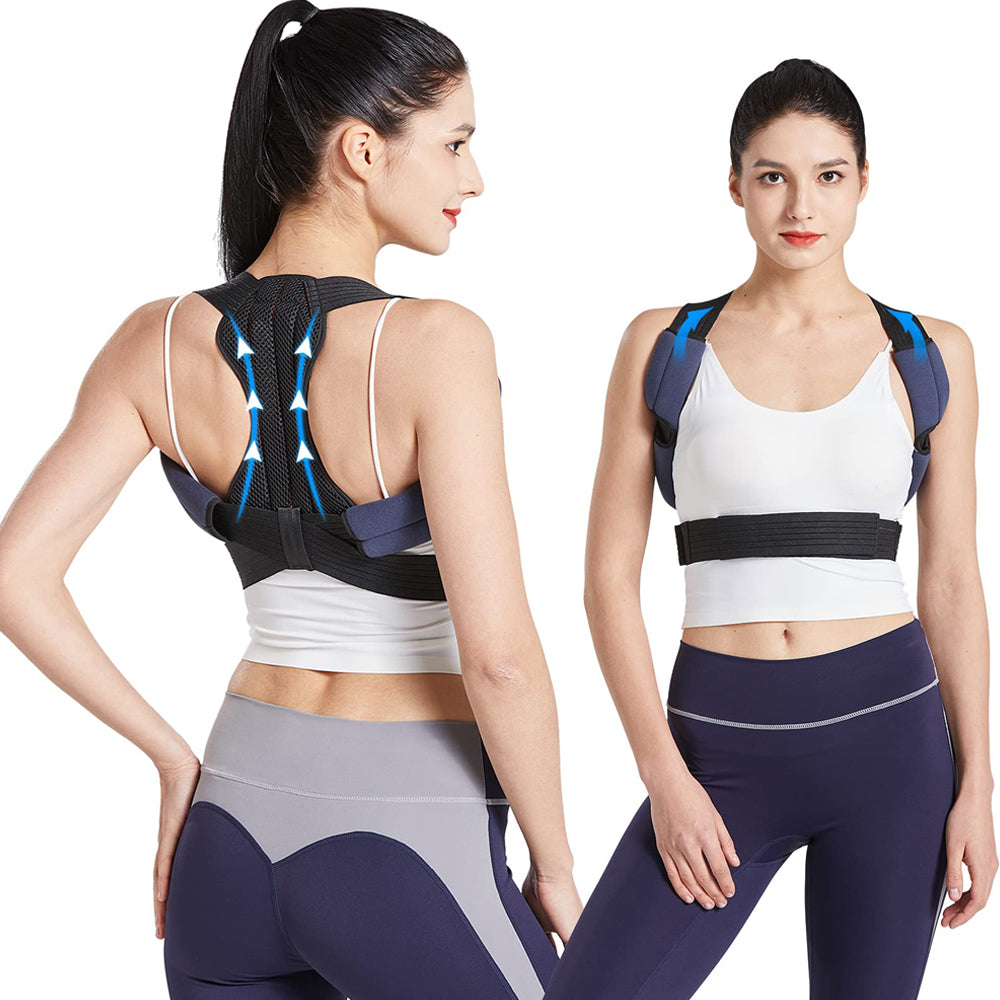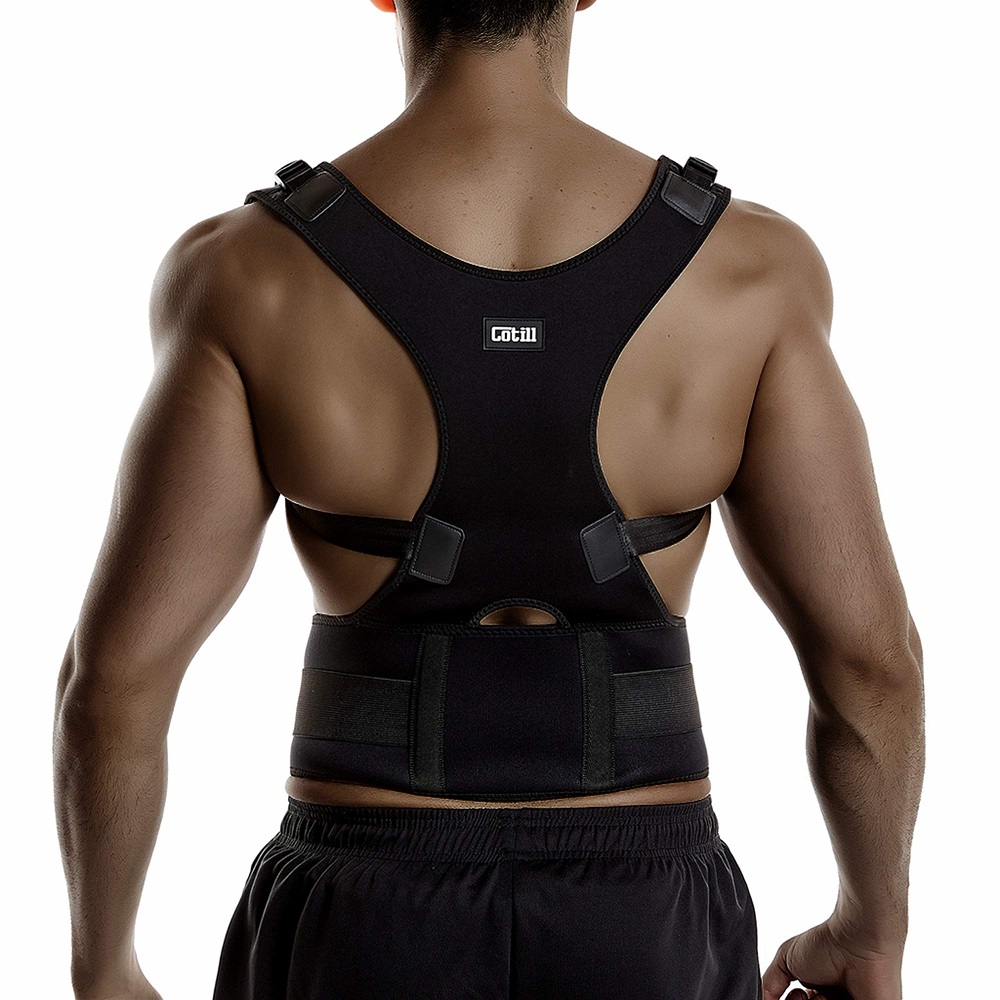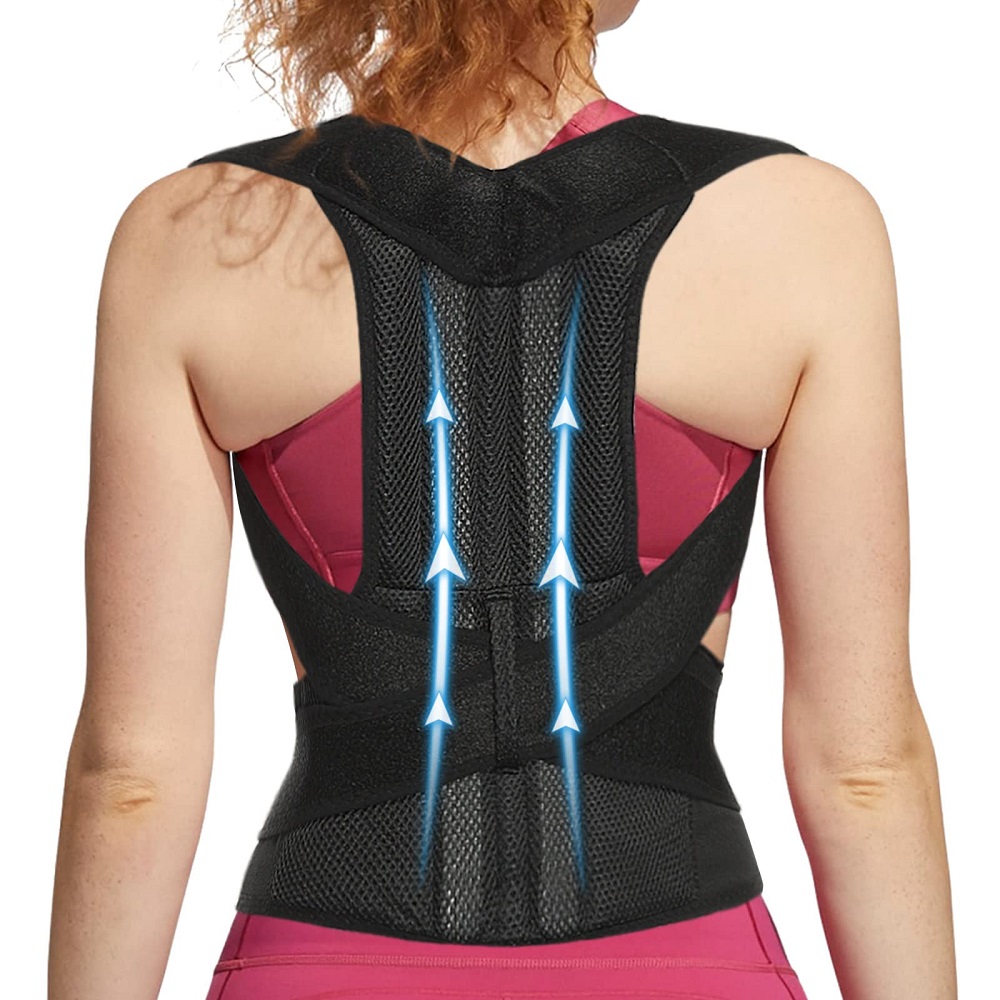Good posture not only enhances your appearance but also improves your overall health and well-being. Many people today struggle with poor posture due to long hours spent sitting at desks or looking down at smartphones. A posture corrector can provide the support you need to develop healthy habits. However, not all posture correctors are created equal. This comprehensive guide will help you assess your needs and choose the right posture corrector for you.
Understanding Posture and Its Importance
What is Good Posture?
Good posture involves the correct alignment of your body, distributing weight evenly across your joints and muscles. This alignment reduces strain on your body and can prevent long-term health issues. When you stand or sit up straight, your spine maintains its natural curve, which is vital for the overall functioning of your body. Proper posture contributes to the optimal alignment of your organs, aids digestion, and even improves breathing. Learning to recognize and practice good posture can lead to increased energy levels, better mood, and enhanced productivity in daily activities.
Effects of Poor Posture
Poor posture can result in various health issues, including back pain, neck pain, headaches, and even respiratory difficulties. Over time, misalignment can lead to chronic discomfort and decreased mobility. Poor posture may also contribute to the development of conditions like sciatica or herniated discs, which can require medical intervention to treat. Furthermore, your self-image can suffer if you consistently hunch your shoulders or slouch, potentially leading to lower confidence levels. Being able to stand tall not only communicates confidence to others but also fosters a more positive self-perception. Understanding the importance of posture in both physical and mental health can motivate you to take corrective steps.

Identifying Your Posture Issues
Assessing Your Posture
Before choosing a posture corrector, it’s essential to identify the specific issues you face. Stand in front of a mirror and assess your alignment. Are your shoulders slouched? Is your head jutting forward? You can even perform a posture test by standing against a wall; your heels, buttocks, shoulders, and head should rest against the wall. Taking note of these issues will provide clarity on the type of support you need. You might also consider keeping a daily log of how your posture changes throughout your routine; this awareness can help pinpoint patterns that you might want to address with a posture corrector later on.
Consulting a Professional
If you’re unsure about your posture or are already experiencing pain, consulting a healthcare professional or physical therapist can be beneficial. They can assess your posture and recommend exercises or specific corrective devices tailored to your needs. Their insights may include identifying muscle weaknesses or imbalances that contribute to your poor posture. Getting a professional opinion can save you time and money by ensuring you choose the right solution from the start. If possible, schedule a follow-up appointment to assess your progress over time, allowing you to adjust your approach as needed.

Types of Posture Correctors
Back Braces
Back braces provide targeted support to your spine, helping you maintain correct posture. They typically consist of elastic or rigid materials, and many offer adjustable straps for a customizable fit. These braces stabilize your back, encouraging an upright position. While they can be effective, it’s important to remember that prolonged use may lead to dependency. Therefore, consider them part of a broader posture improvement plan that includes exercises and stretches. Each time you wear a back brace, remind yourself to focus on developing the underlying muscles responsible for supporting your posture, as avoiding reliance on the brace will ultimately lead to better results.
Posture Shirts and Tanks
Posture shirts and tanks work by offering gentle compression around your torso and shoulders. They promote awareness of your body’s positioning, gently reminding you to sit or stand up straight throughout the day. These lightweight garments can be worn comfortably underneath clothing, making them particularly appealing for professionals or individuals who prefer discretion. Unlike rigid braces, posture shirts can provide a comfortable everyday option for those transitioning to better posture habits. Consider experimenting with different types of posture garments to see which style and fit work best for your lifestyle.

Choosing the Right Fit and Size
Taking Accurate Measurements
Selecting the correct size and fit is crucial for effective posture correction. Measure your torso length as well as girth at key points, including your chest and waist. Most manufacturers provide sizing charts that guide you in choosing the right size. A well-fitted corrector will not only be more comfortable but will also offer better support. If you’re between sizes, consider your comfort preferences; a snug fit can provide needed support, but ensure it’s not so tight that it restricts your movement or causes discomfort.
Adjustability Features
Look for posture correctors that come with adjustable straps or settings, allowing you to customize the tension to your comfort level as you work on correcting your posture. A corrector that’s too loose will provide insufficient support, while one that’s too tight could become uncomfortable and hamper your movement. The best posture correctors allow for gradual adjustment as your posture improves, adapting to your needs over time. This ensures that as you develop strength in your back and core, the device continues to be an asset rather than a hindrance.

Comfort and Material Considerations
Breathable Fabrics
Comfort is essential for any wearable device, and posture correctors are no exception. Look for options made from breathable materials that wick moisture away from your skin, especially if you plan to wear them during physical activities. Fabrics like cotton or lightweight blends offer comfort for all-day wear. Avoid materials that irritate your skin or cause excessive sweating, as discomfort will likely prevent you from wearing the corrector consistently. The right fabric will help you stay cool and comfortable, encouraging consistent use throughout the day.
Padding and Design
Consider the design of the posture corrector as well. Some models feature padding in key areas to prevent chafing while providing comfort. The padding should conform to your body’s contours, enhancing both comfort and adjustability. Pay attention to how the design conforms to your body’s natural shape. A well-designed corrector will allow you to maintain a full range of motion while encouraging better posture. Additionally, think about where and when you’ll be wearing the corrector, as styles differ in their suitability for various occurrences, from work to exercise.
Integrating a Posture Corrector into Your Routine
Gradual Incorporation
While it’s tempting to wear your posture corrector throughout the entire day, start slow. Begin by wearing it for short periods—perhaps 15 to 30 minutes—before gradually increasing the duration. Your body will need time to adjust to the external support, and starting small can help prevent discomfort. Transitioning to a posture corrector should not feel overwhelming; rather, it should be a supportive addition to your existing life. Slowly integrate it into activities where you often find your posture slipping, such as during long hours of sitting at your desk or during work meetings.
Combined Efforts with Exercise
A posture corrector should complement other efforts aimed at improving your posture. Incorporate exercises that strengthen your core, back, and shoulder muscles. Activities like yoga, Pilates, and specific strength training routines can bolster the benefits of wearing a corrector. Many online platforms offer specific exercises focused solely on improving posture and spinal alignment. You might also consider joining a local class to receive expert guidance. Engaging in regular physical activity not only helps strengthen postural muscles but also encourages a more mindful approach to how you hold your body as you go through daily tasks.

Setting Realistic Goals
Measuring Progress
Establish clear and achievable goals for your posture improvement journey. Start with short-term goals, like wearing your posture corrector for a certain amount of time each day or practicing specific exercises regularly. Track your progress by noting changes in how you feel, both physically and mentally. Consider taking “before” and “after” photos to visually document your improvements. Utilize tools such as posture apps or weekly self-assessments to monitor your development and maintain accountability. Recognizing your growth over time can be incredibly motivating, fueling your commitment to better posture habits.
Maintaining Motivation
Staying motivated can be challenging, especially when results take time. Surround yourself with a support network, whether it’s friends, family, or online communities that focus on fitness or wellness. Share your goals and progress with them, and seek encouragement when needed. Keeping a journal to reflect on your experiences can serve as a useful tool to track your progress and remind you of your commitment to better posture. Staying focused on the positive effects of improved posture—such as increased energy, reduced pain, and boosted confidence—will help you maintain your resolve during challenging periods.
Conclusion
Choosing the right posture corrector can be a transformative step toward better health and comfort. By understanding your unique posture issues and the available options, you can select the most suitable device for your lifestyle.
Regular maintenance and attention to your posture habits, combined with exercises, will enhance the effectiveness of your chosen corrector. Remember that improving your posture is a journey, and the right tools will serve as an invaluable ally along this path. With patience and consistency, you’ll not only achieve better posture but also enjoy a host of benefits that enhance your overall quality of life. So, take the plunge and invest in your well-being—there’s no better time to start! Improved posture isn’t merely about looking better; it’s about feeling better and experiencing life to its fullest.

